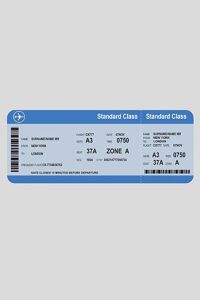Join getAbstract to access the summary!

Join getAbstract to access the summary!
Wendover Productions
The Economics of Airline Class
Wendover Productions, 2017
What's inside?
For those who fly first-class, the days of mile-high luxury may be coming to an end.
auto-generated audio
1×
Log in to listen to the audio summary.
auto-generated audio
Recommendation
Do you fly first-class or squeeze into coach? Until the 1950s, you had only one choice. Wendover Productions explains the evolution of airfares using engaging illustrations that blend simple math with historical context. getAbstract recommends this fascinating case study to anyone interested in travel, pricing or the history of business.
Summary
About the Speaker
Wendover Productions publishes short educational videos that aim to explain how the world works.






























Comment on this summary